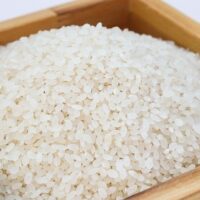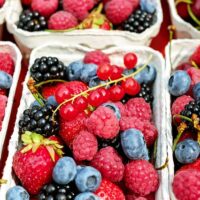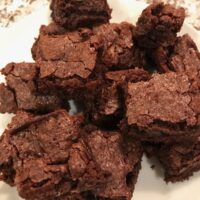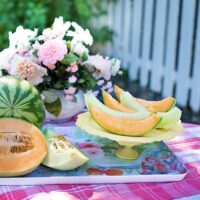Brown vs. White vs. Wild Rice
Rice is a staple carbohydrate in our house. The big question when I serve rice as an accompaniment to a meal: which variety?
White rice actually starts out as brown rice.
A milling process removes the rice’s husk, bran, and germ, making it white. You’ve probably already guessed this: the process also removes most of the fiber, vitamins, and minerals.
White rice is artificially fortified with nutrients and polished in order to look more appealing. Brown rice ranks higher in fiber, manganese, selenium, phosphorus, and magnesium. The exact nutritional components will vary depending on the rice manufacturer.
Rice is probably the single most commonly eaten food in the world. It can be short, medium, or long grain. 
There are over 8,000 varieties of rice. Some of the more popular ones are Basmati, jasmine, arborio, sticky, red, and black.
Rice in its natural form is gluten free. This includes sticky or “glutinous rice,” as this term merely refers to the stickiness of the rice.
White rice has a higher glycemic index, which means its carbs convert more quickly into blood sugar than brown rice.
Brown rice should be kept in an airtight container in a dark, dry cupboard for up to three months, or in the fridge for up to six months. It can become rancid more rapidly due to the presence of the oil-rich germ, not found in processed white rice.
White rice is more stable and may be kept in an airtight container in a dry, dark area such as a cupboard for up to a year.
Rinsing rice before cooking removes its starchy coating, helps prevent sticking and clumping, and gives it a fresh and clean taste.
Once rice is cooked, store in an airtight container in the fridge for up to five days or freeze for up to three months.
Wild rice is a semi-aquatic grass that grows in water, such as lakes, rivers and bays, between two and four feet deep, and is technically not a rice. It’s slightly higher in protein than most whole grains and is a good source of fiber, folate, magnesium and a slew of other beneficial nutrients.
Wild rice has a durable storage time. If you keep it an airtight jar, it stays fresh. Keep it in a dry place in a cool environment. Rinse thoroughly before cooking.
It’s commonly mixed with other rices due to its high price. 
The downside. The rice plant accumulates more arsenic than most other food crops. This becomes a problem where soil or water sources are contaminated with arsenic.
High intake of arsenic can cause a variety of health problems. Varieties that contain lower amounts are jasmine, basmati, as well as rice grown in the Himalayan region.
Additionally, arsenic tends to accumulate in the bran. As a result, brown rice contains higher amounts of arsenic than white rice.
The bottom line: vary your diet and choose varieties lower in arsenic.
Stay tuned for next week’s blog on some substitutes for rice.
Much love,
Carol
“If you give me rice, I’ll eat today; if you teach me how to grow rice, I’ll eat every day.”—Mahatma Gandhi







